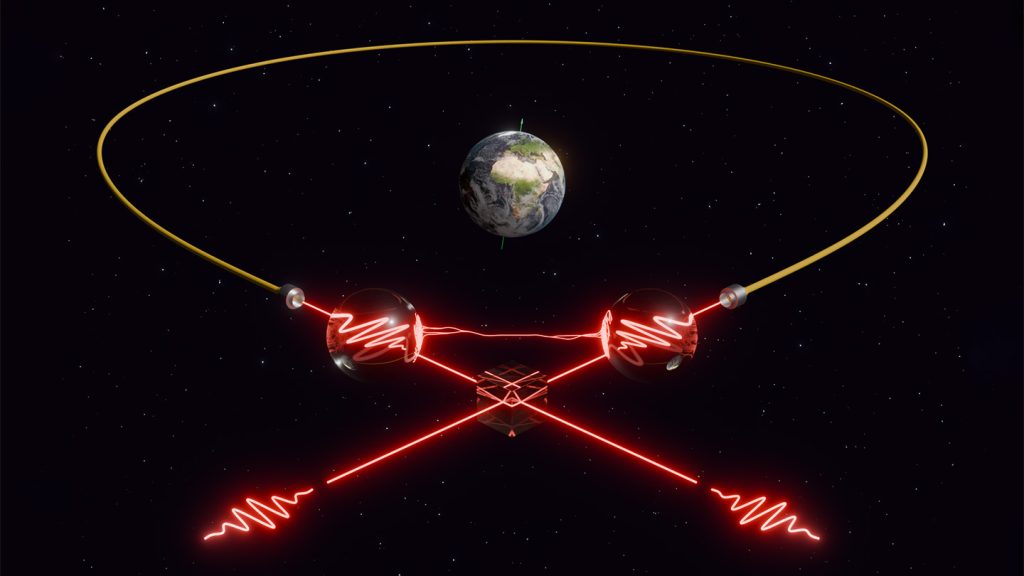Scientists have made a groundbreaking discovery by using entangled quantum particles called photons to measure the rate at which the Earth rotates. This experiment marks a significant step towards understanding the interface between quantum physics and gravity, one of the biggest mysteries in the field of physics. The researchers used a quantum interferometer to send pairs of photons through loops of optical fiber in opposite directions, taking advantage of the entanglement of the particles to create a superposition state where they traveled through a combination of paths.
As a result of the Earth’s rotation, the photons’ two superposed components experienced slightly different travel distances, leading to quantum interference when they exited the interferometer. By measuring this interference, the scientists were able to determine the rotation speed of the Earth, which matched the known rotation rate. This experiment provides valuable insights into the relationship between quantum physics and gravity, which have been challenging to reconcile in the past. The researchers see this as a prototype for larger experiments that will further explore this interface and deepen our understanding of these fundamental forces.
The quantum interferometer used in this study is mounted on a square frame that can rotate, allowing researchers to detect Earth’s rotation or eliminate its effects for comparison. The photons traveled through an optical fiber looped around the frame multiple times, enabling them to experience different travel distances due to the Earth’s rotation. The entanglement of the photons played a crucial role in creating the superposition state and measuring the quantum interference that revealed the Earth’s rotation rate.
Scientists are eager to investigate how quantum physics and the theory of gravity, general relativity, can be reconciled. The experiment with entangled photons offers a glimpse into the potential interface between these two fundamental aspects of physics. This research opens up new possibilities for future experiments that will delve deeper into the interactions between quantum particles and gravity, shedding light on the underlying principles governing our universe.
As physicists continue to grapple with the challenges of merging quantum mechanics and general relativity, experiments like this one provide valuable insights into how these seemingly disparate theories might overlap. By utilizing entangled photons in a quantum interferometer, scientists were able to observe the Earth’s rotation in a unique and innovative way. This achievement represents a significant advancement in the field of quantum physics and sets the stage for further exploration of the relationship between quantum phenomena and gravity on a larger scale.
The successful measurement of Earth’s rotation using entangled photons demonstrates the potential of quantum technologies for probing fundamental physical phenomena. This experiment represents a crucial step towards bridging the gap between quantum physics and gravity, paving the way for future research aimed at elucidating the nature of these forces. By leveraging quantum entanglement and interference, scientists are unraveling the mysteries of the universe and gaining a deeper understanding of the fundamental laws that govern our world.


